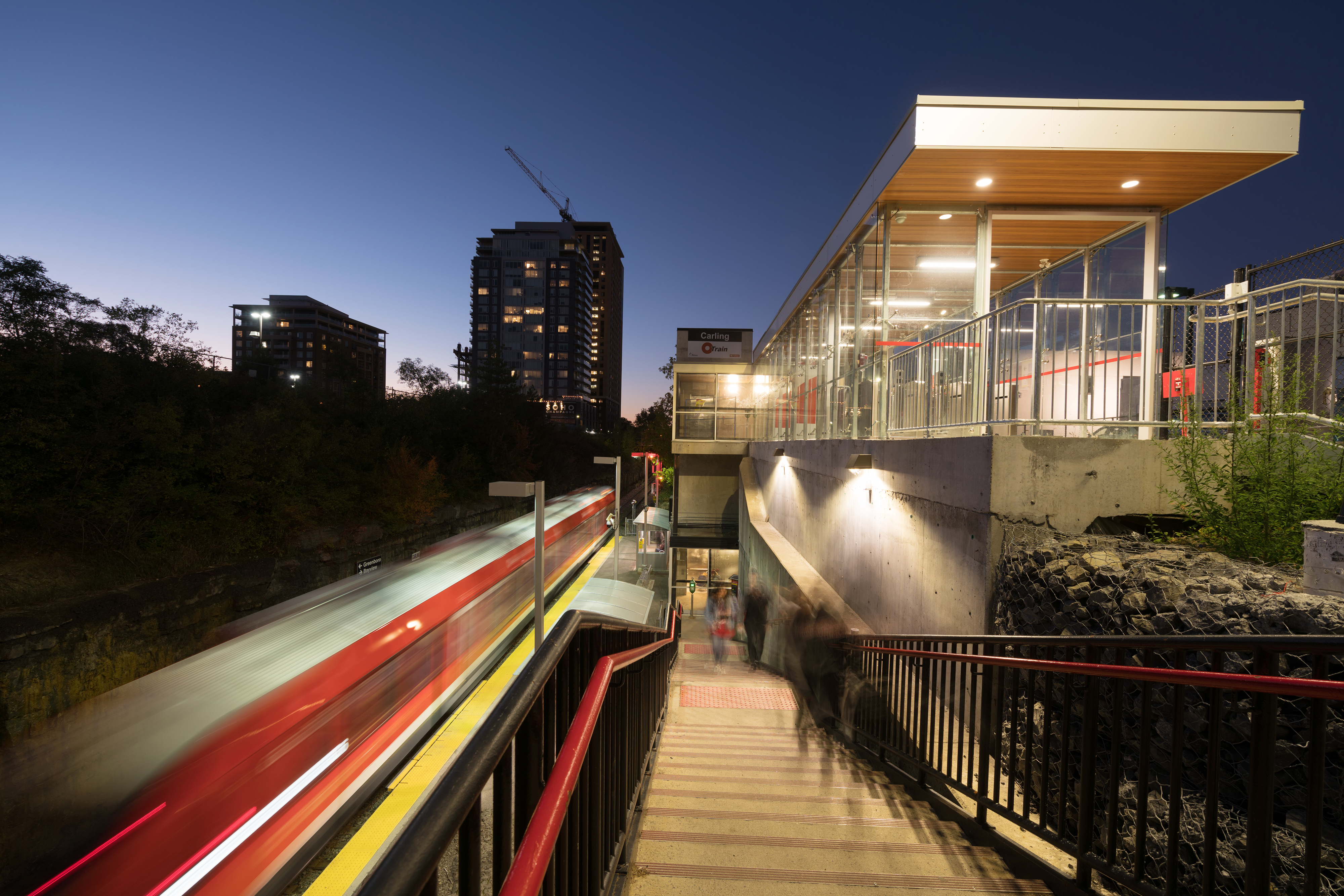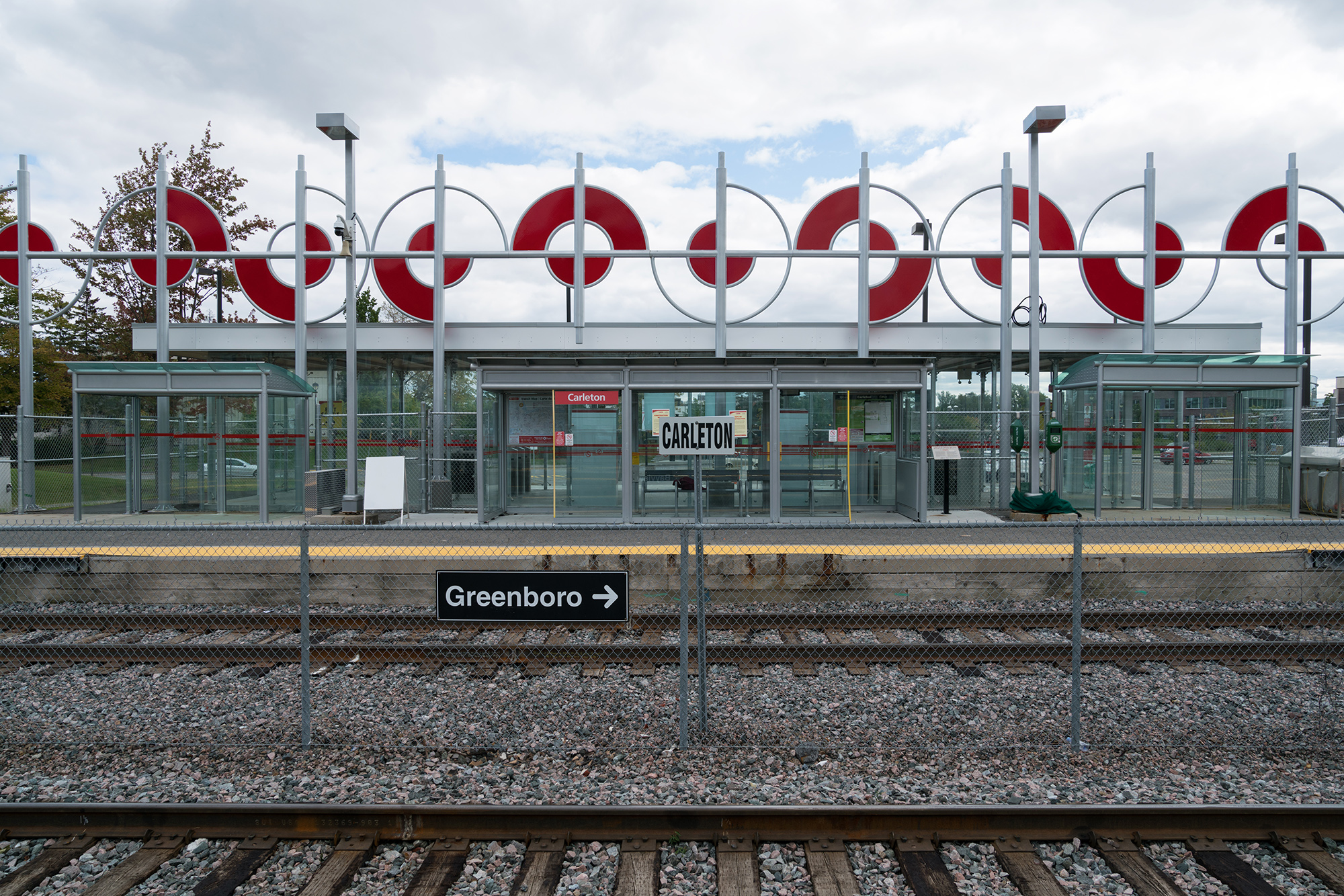
JLR designs new fare gate structures for OC Transpo in Ottawa
November 14, 2017
By
CCE
“The project needed to be delivered under a tight, fast-track time frame without interrupting service along the transit corridor.” -John Elliot

Carling Station (photo courtesy of PCL Construction)
J.L. Richards & Associates Limited (JLR) has completed work on new fare gate structures for OC Transpo. The architecture, engineering, planning, and project management firm provided multidisciplinary services for the project, which involved design and contract administration during construction for new shelters along the Trillium Line in Ottawa.
The completed structures are light and transparent, and are characterized by spider clamps and frameless glass that promote visibility. “We wanted to physically reduce the weight of the structures by having their entire enclosures made of glass,” said Vanessa Worrell, intern architect at JLR. “The glass ensures security and allows for a range of vision, allowing users to see oncoming trains beyond.”
The structures encourage through traffic and contain longboard ceilings for protection against the elements. “The client requested a wood ceiling, but because the structures needed to be non-combustible, we chose an aluminum longboard instead,” said Sebastien Racine, senior architect at JLR. “The result is a warm, natural finish that looks like wood and sits lightly on the glass structure.”
JLR designed all five fare gate structures along the Trillium Line, including an extension to an existing station at Greenboro.

Artwork at Carleton University (photo courtesy of PCL Construction)
At Carleton University, the team worked to integrate artwork that was already present on site. “It was critical for us to respect the art and ensure that our structure didn’t obstruct its view,” said Kim Brown, structural engineer at JLR. The result is a fare gate structure that complements the artwork itself.
Because of their unique geometries, each station presented its own set of challenges. Central to the project, however, was the need to ensure ongoing access for individuals with disabilities, as well as a plan to avoid interference with the train’s operation.
“The project needed to be delivered under a tight, fast-track time frame without interrupting service along the transit corridor,” said John Elliot, an executive director and chief structural engineer at JLR. “Our measure of success is based strongly on the fact that construction never affected service. Working with OC Transpo, the City of Ottawa, and our local partners, we were able to effectively achieve this critical goal.”